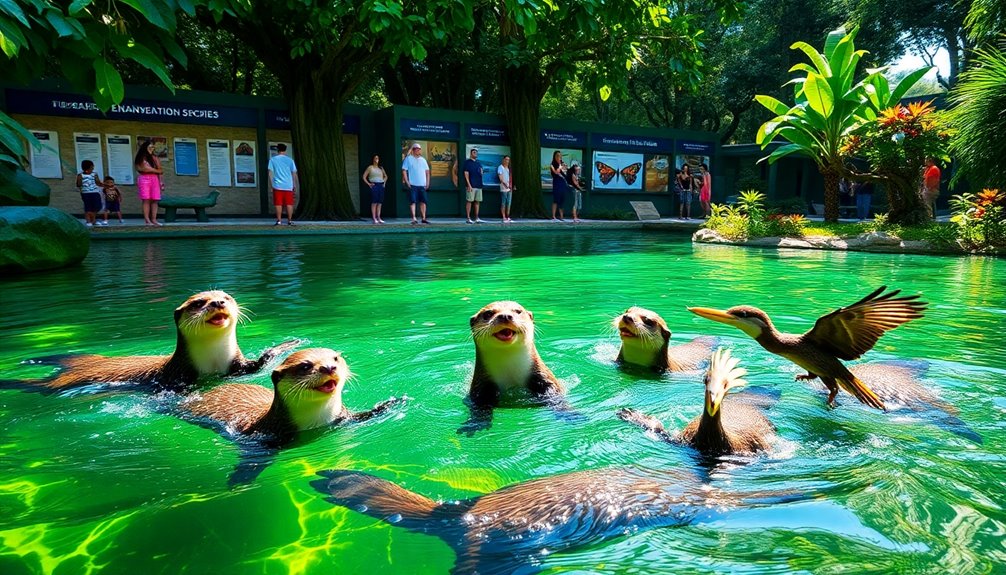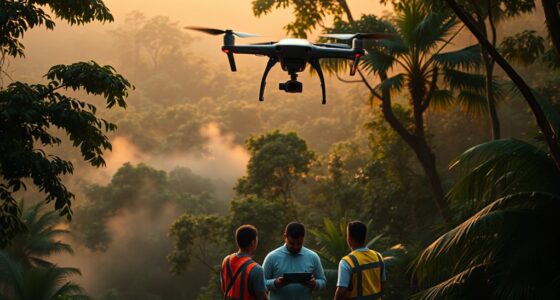Zoos and aquariums contribute to conservation by breeding endangered species, fostering genetic diversity, and creating safe habitats that mimic the wild. They educate the public about environmental responsibility through engaging exhibits and programs. Scientific research conducted in these facilities advances our understanding of animal behavior and health. Collaborative efforts with global organizations enhance conservation strategies, tackling serious threats to wildlife. If you want to discover more about their impact on ecosystems, keep exploring this topic.
Key Takeaways
- Zoos and aquariums participate in breeding programs to increase population numbers of endangered species, maintaining genetic diversity and enhancing survival rates.
- They create safe environments that replicate natural habitats, providing vulnerable animals with secure spaces to thrive and reproduce.
- Educational programs and engaging exhibits raise public awareness about conservation efforts, fostering environmental responsibility among visitors of all ages.
- Research conducted by zoos and aquariums on animal behavior and genetics informs conservation strategies and aids in habitat preservation for various species.
- Collaborative partnerships with conservation organizations address global challenges, sharing resources and knowledge to tackle issues like habitat loss and climate change.
The Role of Zoos and Aquariums in Species Preservation
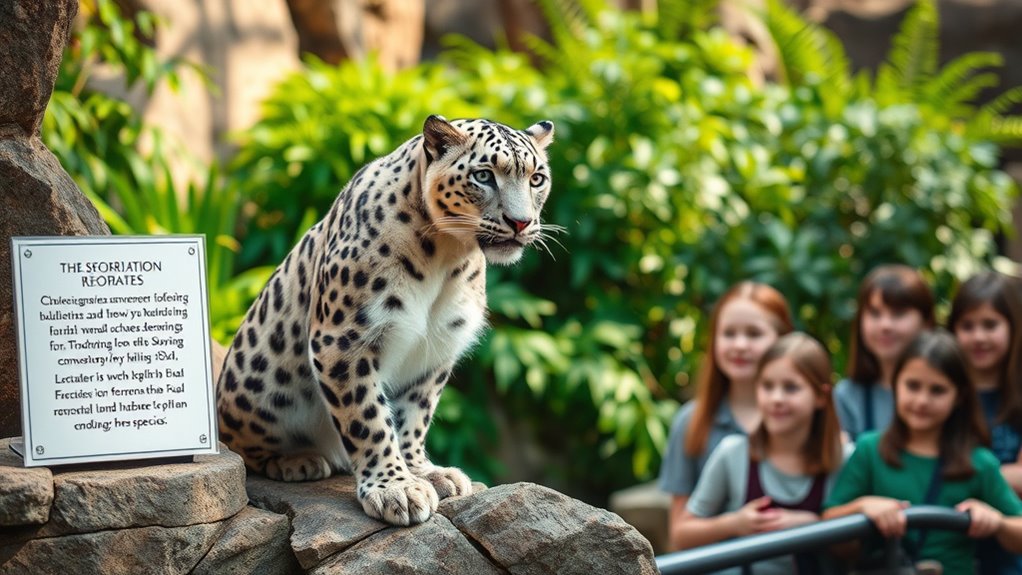
As you explore the vital contributions of zoos and aquariums, you'll find that they play a crucial role in species preservation.
These institutions actively participate in breeding programs for endangered species, ensuring genetic diversity and increasing population numbers. By creating safe environments that mimic natural habitats, zoos and aquariums provide a sanctuary for animals at risk of extinction.
Zoos and aquariums create safe havens for endangered species, boosting genetic diversity and fostering population growth.
They also collaborate with conservation organizations to support habitat restoration and wildlife protection efforts worldwide. Through research initiatives, they gather vital data that can inform conservation strategies.
Your visits help fund these efforts, making you a part of the solution. Ultimately, zoos and aquariums are indispensable allies in the fight to save our planet's biodiversity and protect vulnerable species for future generations.
Education and Awareness: Engaging the Public
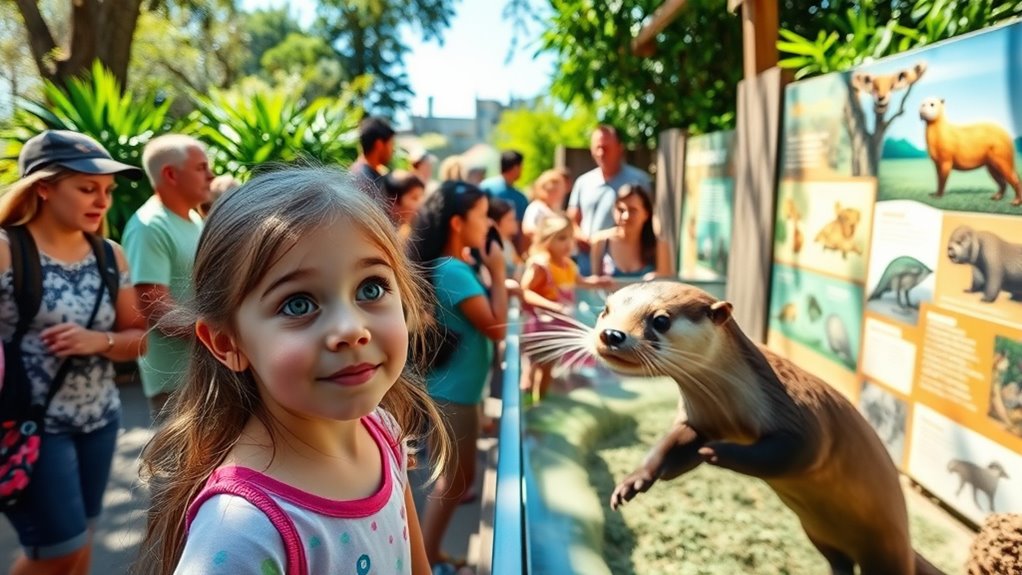
While you explore the wonders of zoos and aquariums, you'll discover they're also powerful platforms for education and awareness.
These institutions invite you to learn about diverse species, their habitats, and the challenges they face. Through engaging exhibits, interactive displays, and informative talks, you gain insights into conservation efforts and the importance of biodiversity.
You'll find dedicated programs designed to inspire people of all ages, sparking curiosity and fostering a sense of responsibility toward the environment.
By participating in workshops or guided tours, you connect with knowledgeable staff who share their passion for wildlife.
Ultimately, your experience at a zoo or aquarium can ignite a desire to take action, encouraging both you and your community to support conservation initiatives.
Research and Scientific Contributions
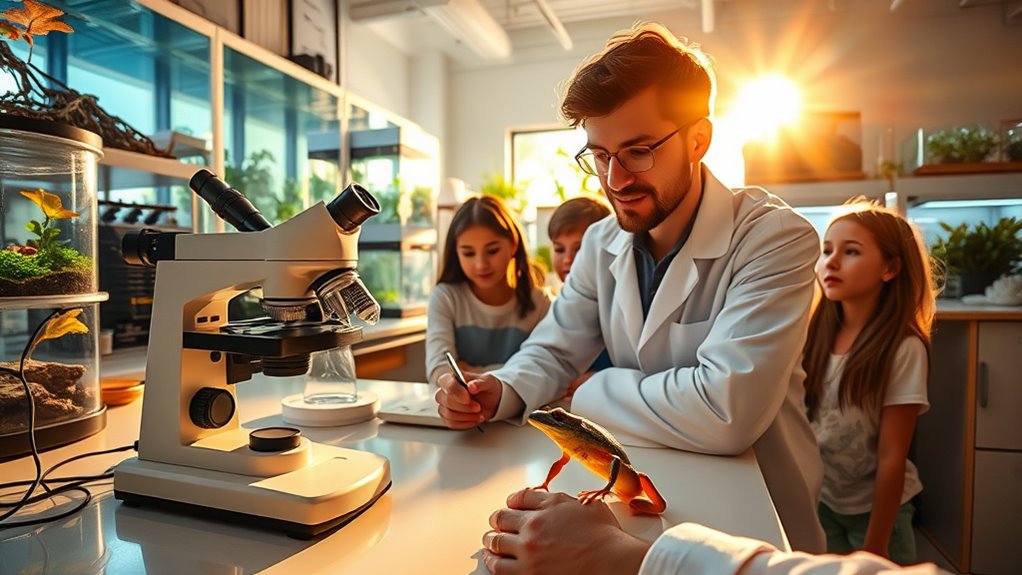
Zoos and aquariums serve as vital hubs for research and scientific contributions, advancing our understanding of wildlife and ecosystems.
You'll find that these institutions conduct crucial studies on animal behavior, genetics, and health, providing insights that benefit both captive and wild populations. By collaborating with universities and conservation organizations, they contribute to groundbreaking research that addresses pressing environmental issues.
You'll see that many zoos maintain extensive databases, tracking species information that helps inform conservation strategies. Additionally, researchers often utilize these facilities to study endangered species, gaining knowledge that can be applied to habitat preservation efforts.
Breeding Programs and Reintroduction Initiatives

Research and scientific contributions lay the groundwork for effective breeding programs and reintroduction initiatives in conservation.
You'll find that zoos and aquariums play a crucial role in preserving endangered species by maintaining genetic diversity. Through carefully managed breeding programs, they ensure that species on the brink of extinction can thrive.
When these animals are reintroduced to their natural habitats, they help restore ecological balance and promote biodiversity. You might be surprised to learn that successful reintroduction efforts have brought species like the California condor and the Arabian oryx back from the edge of extinction.
Partnerships and Collaboration for Global Conservation Efforts
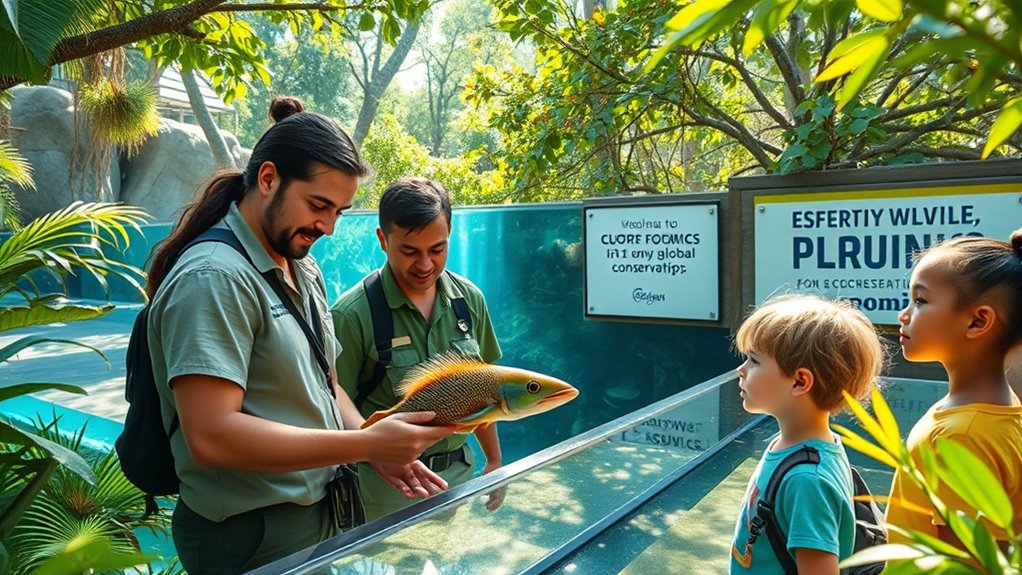
As global conservation challenges grow, partnerships and collaboration among zoos, aquariums, and various organizations become essential to effectively address these issues.
By joining forces, these institutions can share resources, expertise, and data to tackle pressing threats like habitat loss and climate change. When you participate in collaborative initiatives, you help amplify the impact of conservation efforts on a larger scale.
For instance, zoos often partner with wildlife agencies and NGOs to implement field projects that protect endangered species and restore ecosystems. Your involvement can also enhance educational programs, raising awareness about critical conservation issues.
Together, these collaborative efforts foster a united front, ensuring that conservation strategies are both innovative and sustainable, ultimately benefiting wildlife and their habitats worldwide.
Frequently Asked Questions
How Do Zoos and Aquariums Choose Which Species to Conserve?
Zoos and aquariums choose species to conserve based on factors like extinction risk, genetic diversity, and ecological importance.
They assess the species' population status and the challenges they face in the wild. You'll notice they often prioritize those that can benefit from captive breeding and reintroduction programs.
What Ethical Concerns Surround Keeping Animals in Captivity?
When you ponder the fate of creatures like Mowgli's friends in "The Jungle Book," ethical concerns about keeping animals in captivity come to mind.
You might worry about their mental well-being, as confined spaces can lead to stress and unnatural behaviors. Additionally, animal rights advocates argue that it's wrong to limit their freedom for human entertainment.
You'll also consider the impact of captivity on species' ability to thrive in the wild.
How Do Zoos Ensure Animal Well-Being While in Captivity?
Zoos ensure animal well-being by creating environments that mimic their natural habitats and providing enrichment activities that stimulate their physical and mental health.
They monitor the animals' health closely, offering veterinary care and proper nutrition tailored to each species.
Staff members engage in training that promotes positive interactions, reducing stress and encouraging natural behaviors.
What Role Do Visitors Play in Conservation Efforts?
Visitors play a crucial role in conservation efforts. When you visit, you not only learn about endangered species but also support financial resources that fund conservation projects.
Engaging with exhibits and attending educational programs, you become an advocate for wildlife and habitat preservation. Your enthusiasm can inspire others to care about conservation.
How Can Individuals Support Conservation Beyond Visiting Zoos and Aquariums?
Supporting conservation is like planting seeds in a garden; every effort matters. You can volunteer with local environmental groups, participate in clean-up events, or advocate for wildlife protection policies.
Donating to reputable conservation organizations amplifies your impact. You can also reduce your carbon footprint by using public transport and recycling.
Educating others about conservation helps create a ripple effect, inspiring more people to join in and protect our planet's precious ecosystems.
Conclusion
Zoos and aquariums might seem like mere attractions, but they're vital players in global conservation. While they entertain, they also educate, empowering you to appreciate the intricate balance of ecosystems. Their research fuels scientific breakthroughs, and breeding programs breathe life into endangered species. Though confined, these animals symbolize hope, reminding us that preservation requires both action and awareness. By supporting these institutions, you're not just visiting; you're joining a crucial fight for survival in an increasingly fragile world.
